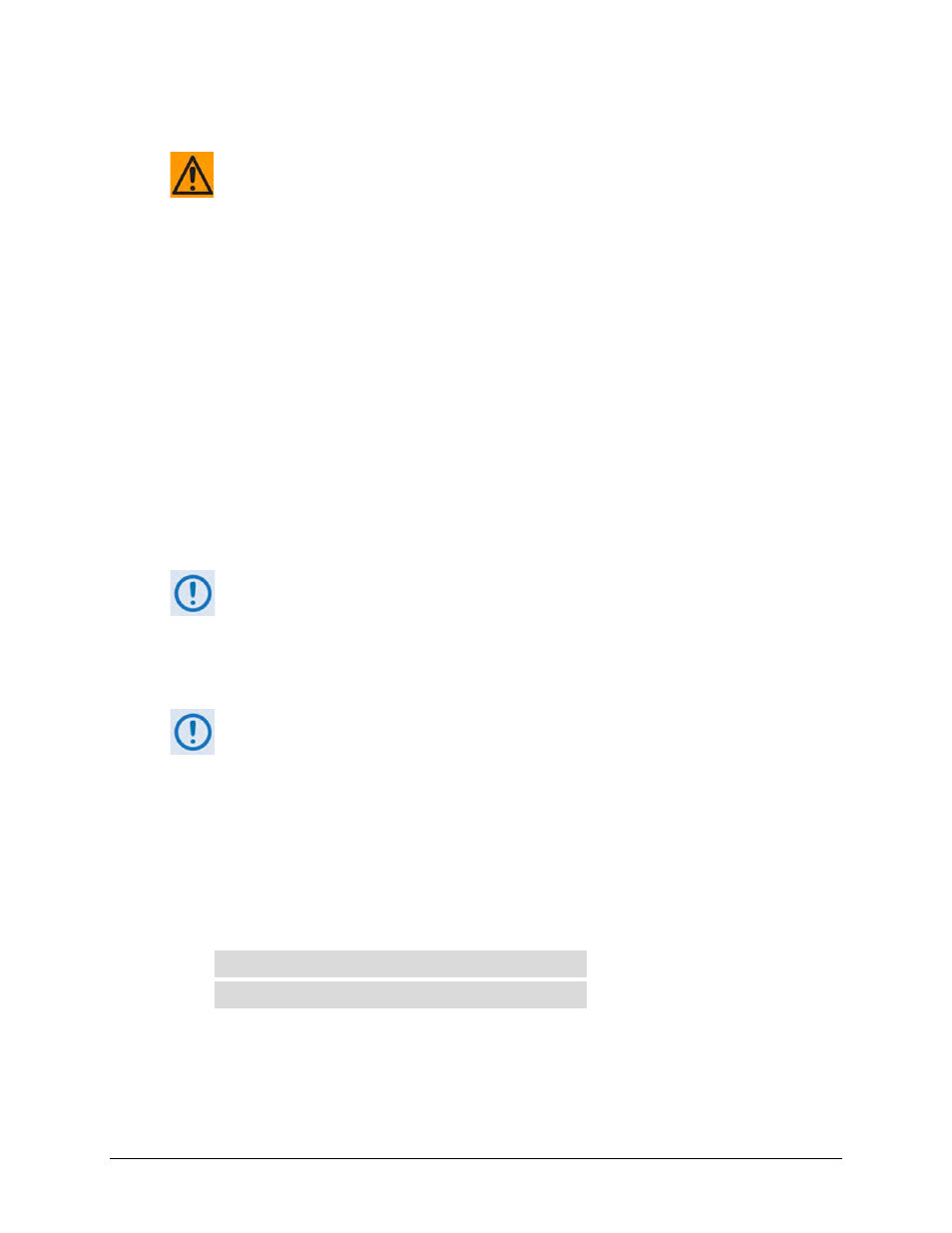2 snmp community strings, 3 snmp traps – Comtech EF Data CDM-625A User Manual
Page 233

CDM-625A Advanced Satellite Modem
MN-CDM625A
Ethernet-based Remote Product Management
Revision 3
7–3
7.3.2 SNMP Community Strings
CAUTION – In SNMP v1/v2c, the SNMP Community String is sent unencrypted in
the SNMP packets. Caution must be taken by the network administrator to ensure
that SNMP packets travel only over a secure and private network if security is a
concern.
The CDM-625A uses Community Strings as a password scheme that provides authentication
before gaining access to the modem agent’s MIBs. They are used to authenticate users and
determine access privileges to the SNMP agent.
Type the SNMP Community String into the user-supplied MIB Browser or Network Node
Management software.
The user defines three Community Strings for SNMP access:
Read Community
default = public
Write Community
default = private
Trap Community
default = comtech
For proper SNMP operation, the CDM-625A MIB files must be used with the
associated version of the CDM-625A Advanced Satellite Modem M&C. Read the
CDM-625A FW Release Notes for information on the required FW/SW compatibility.
7.3.3 SNMP Traps
The modem must be in Ethernet remote mode for the traps to work. You must also
properly assign/configure the Trap IP Address.
The CDM-625A supports both SNMPv1 traps and SNMPv2 notifications. The modem has the
ability to send out SNMP traps when certain events occur and clear in the modem, including unit
faults, Tx faults, Rx faults, and ODU faults.
You only need to compile the “Traps” file if you intend to use SNMPv1 traps. You may configure
which style of traps the modem sends by using the CDM625ASNMPTrapVersion OID.
The CDM-625A supports the following MIB2 v1 traps / v2 notifications:
MIB2 SNMPv1 trap: Authentication Failure
5
MIB2 SNMPv2 notifications: Authentication Failure
1.3.6.1.6.3.1.1.5.5
